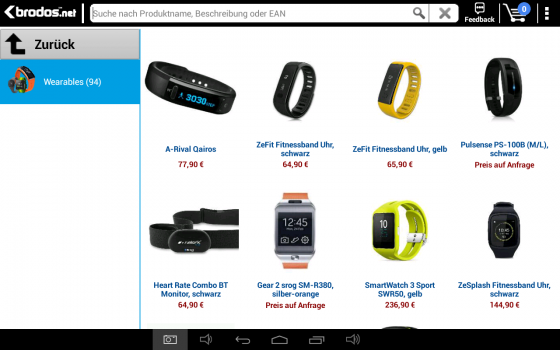Languages
Contact
CONTACT - 0049 9133 7770-800

Stefan Vitzithum, COO
Last year a total of 6.8 million smartwatches and fitness wristbands were sold. Samsung was the leader with 1.2 million products from the Gear product range sold. But is the market for wearables really set to change dramatically with the Apple Watch? Some analysts predict that 26.3 million smartwatches from Apple will be sold within one year.
Samsung is number 1 in the smartwatch market - Top 10 manufacturers of smartwatches / fitness wristbands according to devices sold in 2014
Up until now, a lot of manufacturers have launched wearables without it being clear what the trend actually was. They were called watches, but customers didn’t want to wear them as watches, as they were neither stylish nor handy enough, and didn’t seem to offer any obvious benefits. Instead, they were predominantly used as fitness wristbands, as the main benefit they seemed to offer was the pedometer and fitness tracking function.
We have now entered into the second or third generation of wearables. Considerably more focus has been laid on the benefits for the customer, as the products are now clearly positioned either as fitness wristbands or watches which actually look like watches. And the Android Wear operating system makes it much clearer that a further benefit of wearables is that apps can be run on them.
WEARABLES NEED RETAIL
Watches in particular entail specific challenges: They can be tailored to suit the customer’s requirements, with all kinds of straps available in all sorts of designs. Manufacturers therefore rely on brick and mortar retailers, as it is much more difficult to choose the ideal product online. Customers must be able to try out the various options and materials themselves. Should the strap be made of leather, plastic or stainless steel? Which size and colour suit me?
But why have wearables not yet really gained a hold on the market? The main reason is that there simply is not yet any real killer application available for smartwatches. As purely sports trackers they are not yet attractive enough, and battery life still poses a major problem, a problem which the Apple Watch will not be able to solve either.
We think that wearables will be used in a wide range of areas in the near future, such as for making payments or opening cars, hotel rooms or the front door etc. Another area they could be used in is the health sector, for example as a preventative measure against heart attacks or strokes, but this is an area where research and development is only just beginning.
APPLE WATCH WILL GIVE A BOOST
There are sure to be a lot of new developments in this area, going far beyond what we can see today. I am, however, convinced that the Apple Watch will give a huge boost to the entire market.

At Brodos we currently offer more than 91 different wearables via the brodos.net kiosk.
Wearables as such are a very interesting topic for retailers, not merely as a standalone watch, but more as an extension of the smartphone. They can also become a great additional source of business, as wearables boast a great many characteristics suited to the original strengths of traditional retail stores: they can be designed individually, and customers need and appreciate expert advice. At Brodos, we currently offer 91 different wearables via the brodos.net kiosks.
































